Maak bird cherry and its cultivation

The Maak bird cherry is a beautiful and majestic tree. The plant is a good honey plant. It is easy to maintain and looks beautiful at any time of the year. Therefore, it is often used for planting in suburban areas.
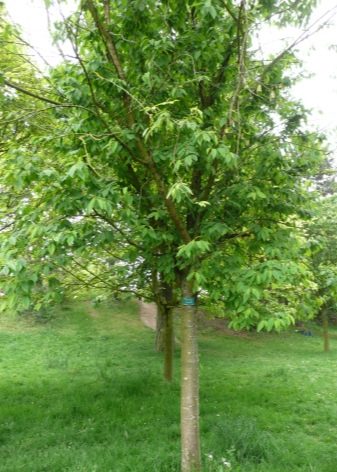
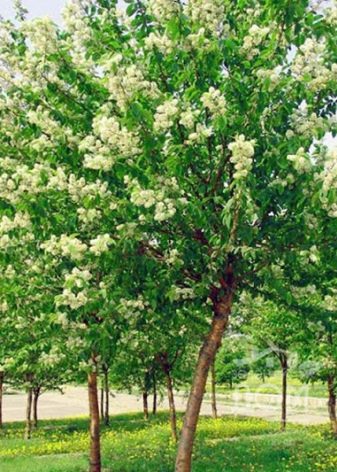
general description
This variety of bird cherry belongs to the Rosaceae family. The main habitat of this plant is the Far East. The culture was named after the person who first discovered it.
Bird cherry Maak tolerates rainfall and excess moisture. In addition, the plant is not afraid of frost and drought. Bird cherry takes root well on any soil. It can be planted both on the sunny side of the site and in the shade. All these characteristics make bird cherry a versatile plant for planting in the country.
In the wild, the tree grows up to 18-20 meters in height. The average trunk circumference is usually between 35-40 centimeters. The bark of the tree is smooth, with a glossy surface. Its color can be either golden or deep brown. It changes with age, becoming darker.
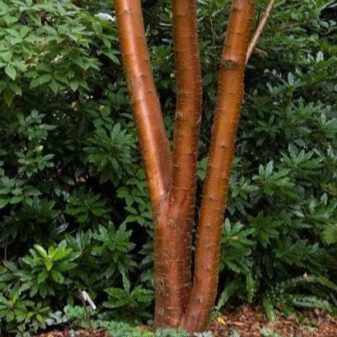

The foliage of this species of bird cherry is light green. It is covered with teeth along the edges. The crown diameter is quite large. In the first half of May, the bird cherry is covered with snow-white flowers. Each of them has five petals. The smell of flowers attracts pollinating insects. Therefore, this type of bird cherry is often planted next to the apiary. By mid-July, large berries ripen on the branches. They are distinguished by a rich purple color and a bitter taste. They are not edible to humans. But birds and animals consider them an excellent delicacy.
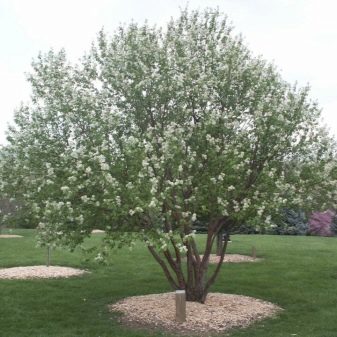
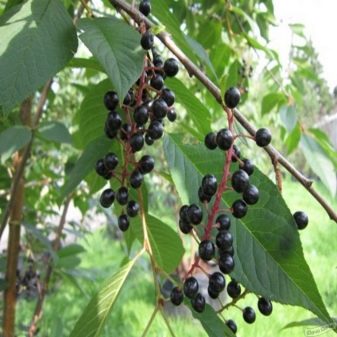
Popular varieties
Since this variety of bird cherry initially attracted breeders, there are now several varieties of this tree.
- Amber beauty... This type of bird cherry is distinguished by a pleasant copper color of the bark. The plant has a beautiful pyramidal crown and elliptical leaves. Depending on the season, they change color from light green to emerald green. The plant has excellent resistance to low temperatures. Therefore, it is used to decorate areas in cold regions.

- Cerapadus. This is a hybrid of bird cherry and cherry. It was bred by Michurin as a result of pollination of cherries with the pollen of a new tree. On the hybrid, small fruits ripened with an almond smell and a bitter taste. The plant has a strong root system and strong immunity. It almost never gets sick.
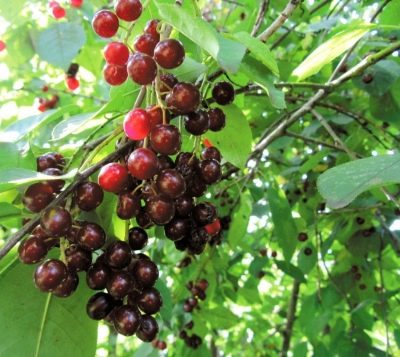
- Firebird. This tree is also a hybrid. It grows in the form of a bush. Its maximum height is 2.5 meters. The fruits of the bird cherry are dark red and tart. The plant is characterized by an average frost resistance.
All these varieties of bird cherry can be found in modern nurseries.

Landing
Maak bird cherry takes root well in most areas. She has a neutral attitude to light, high drought resistance and frost resistance. Therefore, choosing a place for her is quite simple.
It is recommended to plant bird cherry in early spring or late autumn. You need to choose healthy seedlings for planting. There should be no traces of rot on the trunk and rhizome. It is very important that the root system is developed and healthy. If there are damaged or dry branches on its surface, they must be removed.
Before planting, the seedlings are soaked in a growth stimulant solution. They are placed in a container with the selected product for 10 hours.If the root system of the seedlings is closed, they are treated for only half an hour.
A few weeks before disembarkation, it is necessary to prepare a landing pit. Its average depth and diameter should be within 50 centimeters. The excavated soil must be mixed with river sand, humus and peat. Then it must be poured into the hole. The prepared pit should be left for 10-20 days.
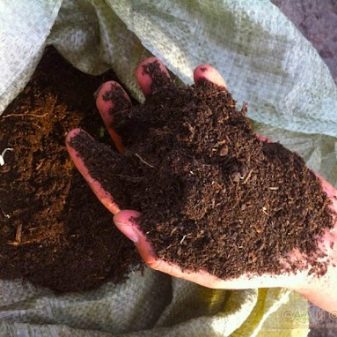
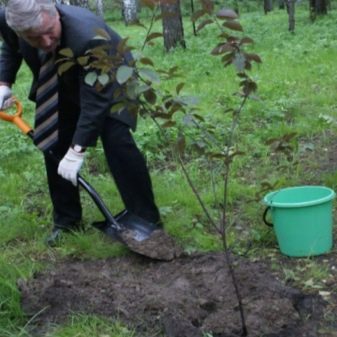
The planting process consists of the following steps.
- In the prepared area, you need to dig a hole of a suitable size... The rhizome should fit into it without bending.
- Next, a seedling must be placed in this hole. It is worth installing a support nearby. The seedling is tied to it with a soft cloth or twine.
- The hole must be covered with soil. After that, the earth must be carefully tamped.
- The soil must be watered with warm water and mulched.... Sawdust or peat can be used as mulch. A layer of mulch will protect the young plant from weeds. In addition, it does not need to be watered frequently.
If several plants are planted on the site at once, it is important that the distance between them is at least 5 meters. If the bird cherry is planted in the shade, the space between individual trees should be even larger.
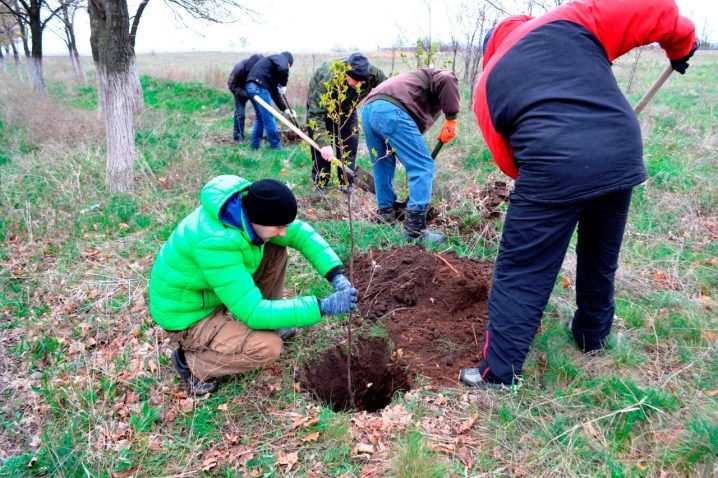
Care
It is quite simple to care for this variety of bird cherry.
- Watering... The plant needs regular watering only in the first year of life. In the future, it needs to be watered only during a prolonged drought. Watering should be very abundant. It is recommended to loosen the soil after watering. In this case, a dense crust will not form next to the trunk, which interferes with the flow of air and nutrients to the roots.
- Pruning... It is necessary to start forming the crown of a young tree from the moment the first shoots appear. The top must be carefully trimmed with a sharp secateurs or garden shears. All tools used for trimming must first be disinfected. Places of cuts must be covered with garden pitch. When pruning, it is also necessary to remove all weak, dry and diseased branches. This helps to heal the tree. In addition, the crown looks very beautiful after this procedure.
- Fertilizer... Feeding the Maak bird cherry is optional. The tree has enough top dressing, which was introduced into the soil when it was planted. But if the bird cherry grows in an area with poor soil, mineral fertilizers must be applied to it every few years. This will improve the appearance of the flowering tree. You can add the product in any way. The main thing is not to exceed the dosage. After all, an excess of nutrients in the soil also harms bird cherry.
The plant reproduces very quickly. Therefore, it is important for gardeners to remove all root growth.
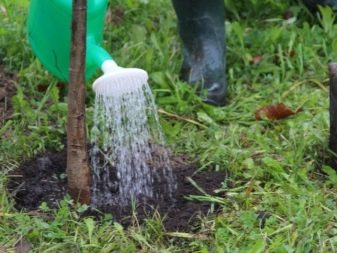
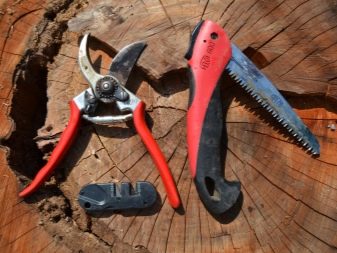
Reproduction
This variety of bird cherry can be propagated in several ways.
- Cuttings... Green cuttings are used for propagation of Maak bird cherry. They are cut at the stage of the end of the growth of young shoots. The length of the cuttings should be within 15 centimeters. For cut cuttings, most of the foliage should be removed immediately. Next, the cuttings should be left for a day in a container with a growth stimulant solution. After that, the branches are placed in a container with a nutrient mixture consisting of fertile soil, humus and peat. In the fall, cuttings with a full-fledged root system can be transplanted to a new site. When planting, it is worth adding a small amount of organic fertilizers to the hole. So the tree will take root much faster.
- Seedlings... In nature, bird cherry always reproduces by self-seeding. Small growth can be seen around each tree. Strong plants can be used to grow full-grown trees. It is worth choosing seedlings from two years old.
- Root shoots. Shoots growing from the root system can also be used for bird cherry propagation. Young shoots are carefully separated from the main plant. This should be done in early spring. The sprout must be placed in a container with a nutrient substrate.In the fall, when its strong roots have already formed, the plant will need to be transplanted to a new place.
- Layers... This method of breeding bird cherry is used less often than others. In this case, the shoots of an adult plant are used. In the spring, they are bent to the ground and placed in pre-prepared planting holes. After that, the sprouts are fixed with metal brackets, and covered with earth. In the summer, they are additionally sprinkled with earth. It is necessary to spud shoots 2-4 times during the whole season. In the fall, the rooted shoots must be separated from the main tree and transplanted to a new place.
Bird cherry usually begins to bloom 7-8 years after planting. Before flowering is not worth waiting for.
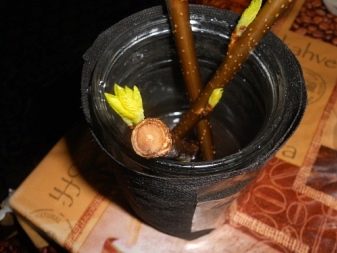
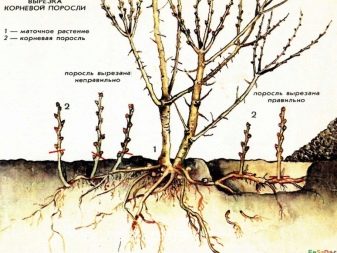
Diseases and their treatment
Maak bird cherry is highly resistant to disease. But it can also be affected by various diseases.
Fruits
Bird cherry fruits usually suffer from viral diseases. As a result, the shape of the berries changes. They swell and take on a brown tint. Voids appear inside the berries. Infections reduce the yield of the tree and make it unattractive.
Solutions containing copper help fight infectious diseases. Infected trees need to be processed regularly until the bird cherry is completely healed.
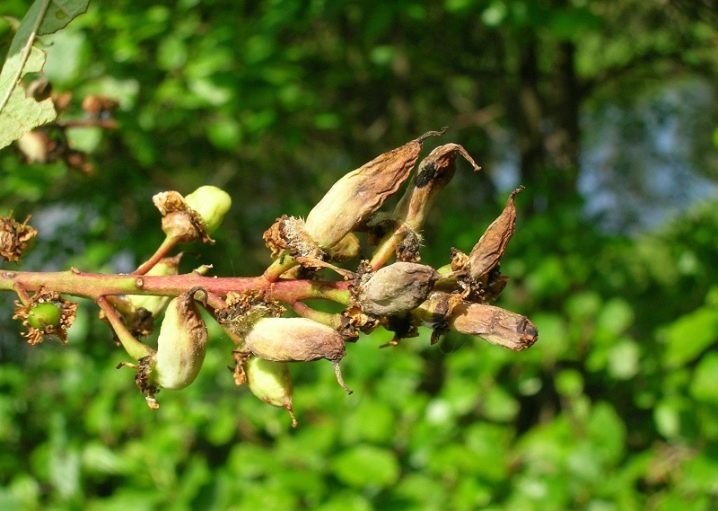
Leaves and branches
By examining the foliage and shoots of the tree, the gardener can detect signs of the following diseases.
- Cytosporosis... This disease causes the branches to dry out. At this time, the trunk and shoots are covered with whitish tubercles. You need to fight this disease very quickly. Affected branches must be removed. Places of cuts are treated with copper sulfate. It is recommended to incinerate contaminated plant material. Otherwise, the disease will spread further.
- Rust... The main symptoms of this disease are brownish-purple spots that quickly cover the foliage of the tree. Both young plants and trees can hurt during flowering. Copper sulfate is used to fight rust. Trees are treated with it several times, with a break of 10-15 days.
- Rubella... This is a common fungal disease. The foliage of diseased plants is covered with red spots. In the future, the bird cherry weakens and dies. If the plant was affected by the disease before the formation of the buds, it must be treated with copper sulfate. After flowering, Bordeaux liquid is used for processing.
- Rot... This disease is caused by a tinder fungus. After the root system decays, the entire tree weakens. Its branches become brittle, and foliage falls off. If the plant is already sick, it cannot be saved. Therefore, the bird cherry must be uprooted and destroyed.
- Spotting... Bird cherry is sick with several types of spotting. The most common of them is perforated. The sore foliage is covered with brown spots with crimson edges. Over time, these spots fall out. Because of this, it appears that the foliage has been damaged by insects.
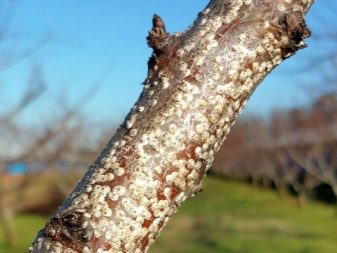
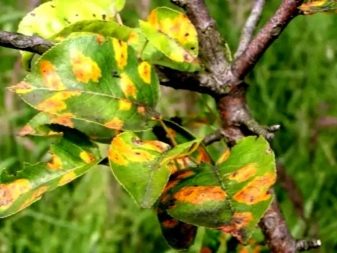
Insects rarely attack the tree. As a rule, bird cherry is attacked by bark beetles, weevils and various caterpillars. Any proven insecticide can be used to control them.
Application in landscape design
Maak bird cherry is used both in group and in single plantings. When planting a plant, it should be borne in mind that the crown of adult trees is lush. Therefore, it must be located next to shade-resistant crops. Bird cherry is often planted near an orchard. This helps attract pollinating insects to fruit trees.
Low young plants can be used to create a hedge at the border of the site. Alleys are also often formed from them. They look beautiful at any time of the year. Separate trees are planted next to the master's buildings.
But you should not plant them next to gazebos or other places for recreation. Indeed, during flowering bird cherry fills the air with a very strong aroma. Therefore, if you stay near a flowering tree for a long time, you can get a headache.

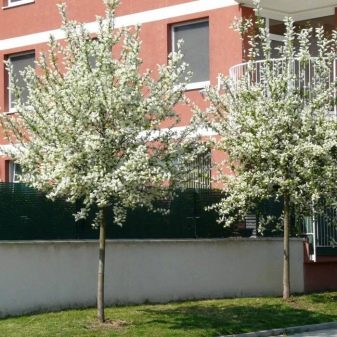
Flowers or shrubs can be planted near the tree trunk. The main thing is that they develop normally in the shade and can grow in poor soil. In general, bird cherry is a versatile tree that can be found on any site. The planted plant will delight people with its appearance for a long time, without causing them unnecessary trouble.










The comment was sent successfully.